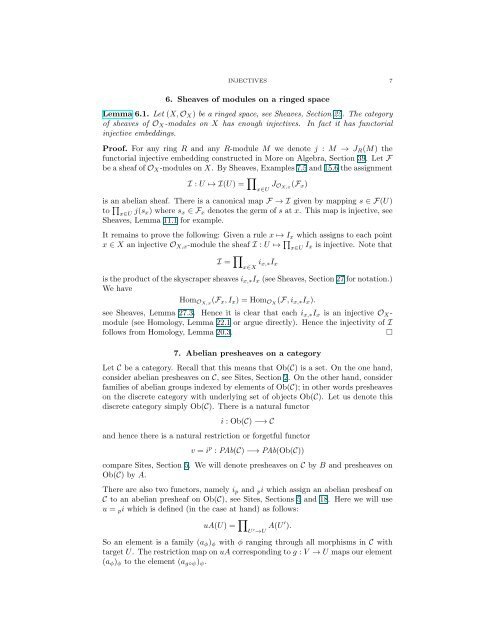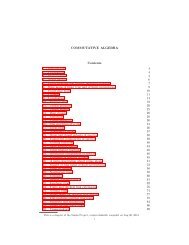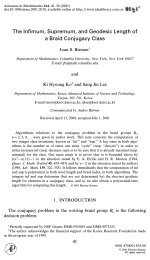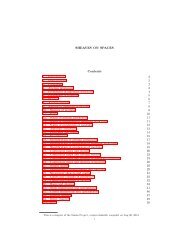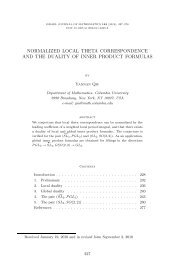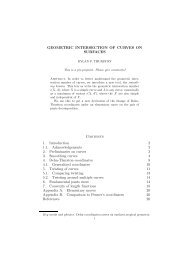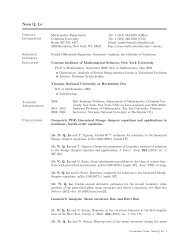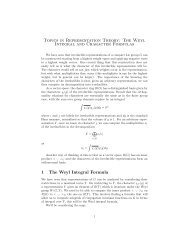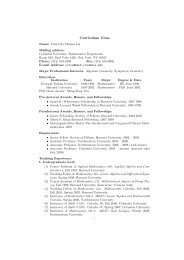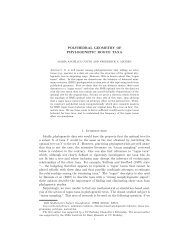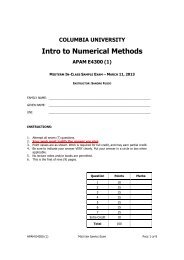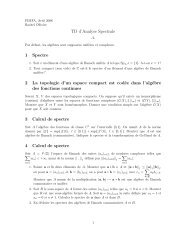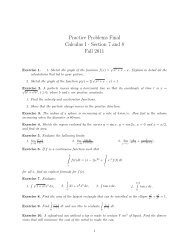INJECTIVES Contents 1. Introduction 1 2. Modules ... - Stacks Project
INJECTIVES Contents 1. Introduction 1 2. Modules ... - Stacks Project
INJECTIVES Contents 1. Introduction 1 2. Modules ... - Stacks Project
Create successful ePaper yourself
Turn your PDF publications into a flip-book with our unique Google optimized e-Paper software.
<strong>INJECTIVES</strong> 7<br />
6. Sheaves of modules on a ringed space<br />
Lemma 6.<strong>1.</strong> Let (X, OX) be a ringed space, see Sheaves, Section 25. The category<br />
of sheaves of OX-modules on X has enough injectives. In fact it has functorial<br />
injective embeddings.<br />
Proof. For any ring R and any R-module M we denote j : M → JR(M) the<br />
functorial injective embedding constructed in More on Algebra, Section 39. Let F<br />
be a sheaf of OX-modules on X. By Sheaves, Examples 7.5 and 15.6 the assignment<br />
I : U ↦→ I(U) = <br />
JOX,x (Fx)<br />
is an abelian sheaf. There is a canonical map F → I given by mapping s ∈ F(U)<br />
to <br />
x∈U j(sx) where sx ∈ Fx denotes the germ of s at x. This map is injective, see<br />
Sheaves, Lemma 1<strong>1.</strong>1 for example.<br />
It remains to prove the following: Given a rule x ↦→ Ix which assigns to each point<br />
x ∈ X an injective OX,x-module the sheaf I : U ↦→ <br />
x∈U Ix is injective. Note that<br />
I = <br />
x∈X ix,∗Ix<br />
is the product of the skyscraper sheaves ix,∗Ix (see Sheaves, Section 27 for notation.)<br />
We have<br />
HomOX,x (Fx, Ix) = HomOX (F, ix,∗Ix).<br />
see Sheaves, Lemma 27.3. Hence it is clear that each ix,∗Ix is an injective OXmodule<br />
(see Homology, Lemma 2<strong>2.</strong>1 or argue directly). Hence the injectivity of I<br />
follows from Homology, Lemma 20.3. <br />
x∈U<br />
7. Abelian presheaves on a category<br />
Let C be a category. Recall that this means that Ob(C) is a set. On the one hand,<br />
consider abelian presheaves on C, see Sites, Section <strong>2.</strong> On the other hand, consider<br />
families of abelian groups indexed by elements of Ob(C); in other words presheaves<br />
on the discrete category with underlying set of objects Ob(C). Let us denote this<br />
discrete category simply Ob(C). There is a natural functor<br />
i : Ob(C) −→ C<br />
and hence there is a natural restriction or forgetful functor<br />
v = i p : PAb(C) −→ PAb(Ob(C))<br />
compare Sites, Section 5. We will denote presheaves on C by B and presheaves on<br />
Ob(C) by A.<br />
There are also two functors, namely ip and pi which assign an abelian presheaf on<br />
C to an abelian presheaf on Ob(C), see Sites, Sections 5 and 18. Here we will use<br />
u = pi which is defined (in the case at hand) as follows:<br />
uA(U) = <br />
U ′ →U A(U ′ ).<br />
So an element is a family (aφ)φ with φ ranging through all morphisms in C with<br />
target U. The restriction map on uA corresponding to g : V → U maps our element<br />
(aφ)φ to the element (ag◦ψ)ψ.


